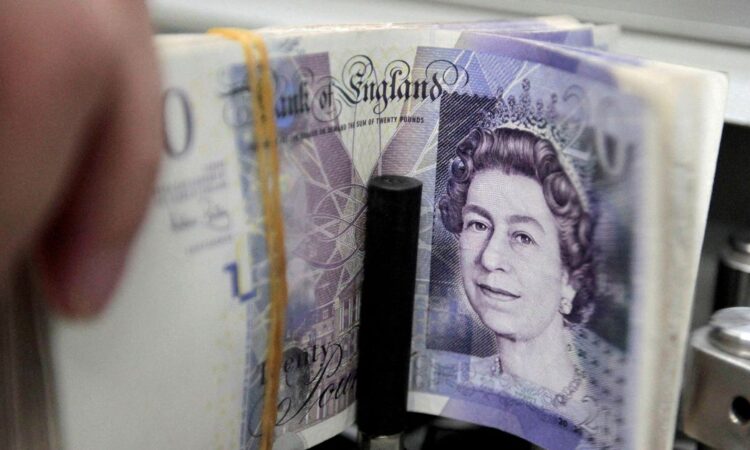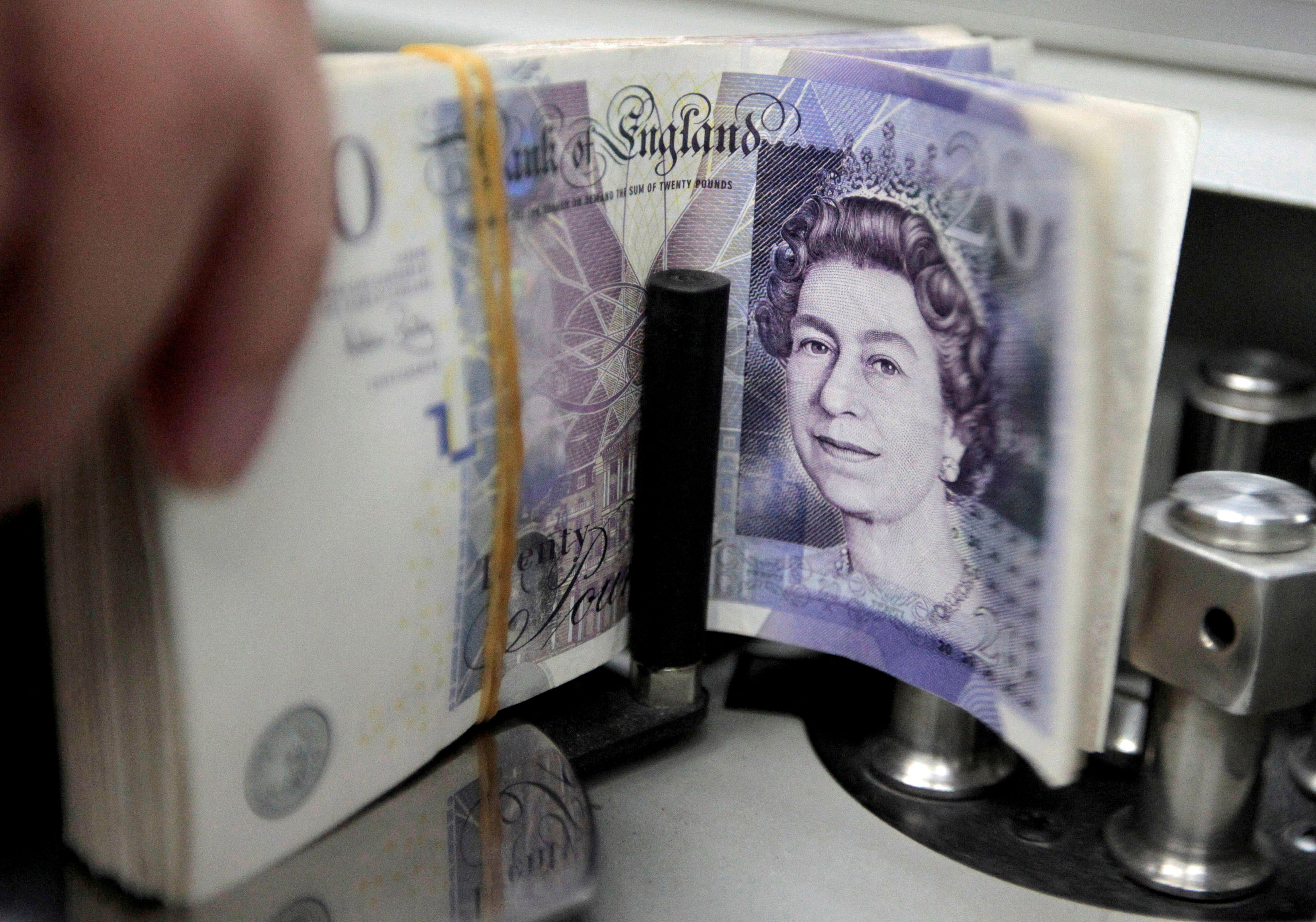

A bank employee counts pound notes at Kasikornbank in Bangkok, Thailand, October 12, 2010. REUTERS/Sukree Sukplang/File Photo Acquire Licensing Rights
LONDON, Oct 5 (Reuters) – The British pound dipped against the U.S. dollar and the euro on Thursday after data showed the biggest slump in UK construction activity since 2020, while a Bank of England survey showed British firms see prices rising more slowly.
The S&P Global/CIPS UK construction Purchasing Managers’ Index (PMI) tumbled to 45.0 in September from August’s 50.8, its lowest since May 2020, when COVID-19 pandemic restrictions were in full force. The figure was well below the 50 level that separates contraction from expansion.
Economists polled by Reuters had forecast a much more modest decline to 49.9.
“The construction data wasn’t particularly pretty but the sector is a relatively small part of the UK economy,” said Michael Brown, analyst at TraderX.
“The key takeaway is that all the PMI surveys are below 50, still implying contraction,” Brown added.
The all-sector PMI – which includes services, manufacturing and construction – stood at 48.2 in September, its lowest level since January 2021.
By 0918 GMT, the pound was at 86.68 pence per euro , down around 0.1%.
Sterling was also down about 0.1% against the dollar at $1.2125, holding just above Wednesday’s 6-1/2 month low of $1.20385.
The pound has struggled against the dollar recently as a more robust U.S. economy has prompted investors to bet that U.S. interest rates could rise further, while the Bank of England looks to be at, or near, the end of its tightening cycle.
“Slowing momentum in activity, the recent decline in employment, and the sharp falls in core CPI and services inflation in August are clear signs that higher interest rates are weighing more heavily on the economy,” Capital Economics UK economist Ashley Webb said in a note.
“That said, we still suspect that wage growth and services inflation will fall only slowly,” Webb added, noting that Capital Economics expects the Bank of England to hold interest rates at the current level of 5.25% until late 2024.
Money market traders are pricing around a 30% chance that the central bank will raise its Bank Rate by 25 basis points at the November meeting, but that would likely be the final hike of the tightening cycle.
Still, that is far below pricing from three months ago when traders were expecting interest rates to peak above 6% by the middle of next year.
Meanwhile, the Bank of England’s closely-watched Decision Maker Panel survey showed British companies over the last three months cut expectations for selling price increases but forecast wage growth staying high.
Reporting by Samuel Indyk
Editing by Mark Potter
Our Standards: The Thomson Reuters Trust Principles.




